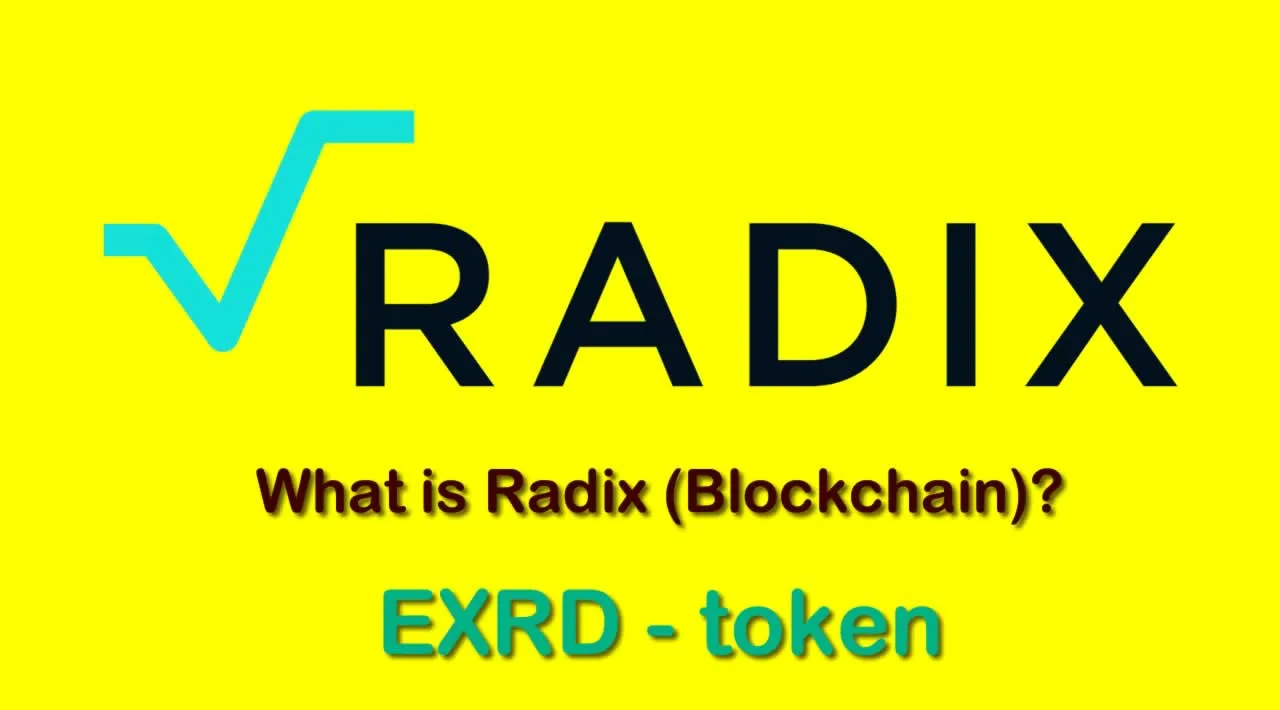What is Radix Blockchain (EXRD) | What is EXRD token
Radix is the first layer-one protocol specifically built to serve DeFi. Decentralized finance applications are currently built on protocols that are not fit for purpose, leading to congestion, hacks and developer frustration. Radix changes this by introducing a scalable, secure-by-design, composable platform with a DeFi specific build environment to make it easy to build and launch scalable DeFi.
DeFi is a booming sector. But with this craze around the latter, users have observed limits to certain protocols, such as Ethereum (ETH) and its fees which were exploding day by day. And despite days and days of tearing our hair out, the solution is not yet there … Radix then arrived in this context by coming to propose a Blockchain based on a new consensus: Cerberus. Thanks to the latter but also to all the building blocks developed around it, Radix has specialized in processing DeFi applications. Explanations.
Warning : This sponsored article is offered to you in partnership with the company Radix. Crypto investments are risky by nature, do your own research and invest only within the limits of your financial capacity. This article does not constitute an investment invitation.
Project display
Radix starts from a simple premise: DeFi is the future of finance. The second assumption is the following: today, no Blockchain succeeds in satisfying the needs of DeFi.
And Radix intends to solve this problem! To do so, the team behind Radix focused on 3 points that they considered essential:
- Accessibility : the ability to easily enter and exit DeFi protocols but also on the Radix Blockchain itself;
- Cash : Liquidity is what makes a project successful or not. The Radix Blockchain natively offers features allowing projects to have pools of liquidity or other mechanisms that encourage it;
- Choice : the more players there are on the Blockchain, the greater the choice will be, thus leaving users complete freedom. Radix has therefore put in place systems to help the arrival of new players.
And finally, these three points go together to form a virtuous circle.
 Image taken from radixdlt.com
Image taken from radixdlt.com
Indeed, accessibility leads to a greater number of users, which then leads to more liquidity, which leads to a greater number of actors wanting to come, who themselves attract more users … You understand the principle!
And all this wouldn’t work without this new consensus: Cerberus! He really is the foundation of everything. Although this is a bit technical, we invite you to read the latter’s whitepaper if you are interested!
To put it simply, Cerberus is part of the so-called “braiding” consensus family. The advantage of this consensus family is that it allows the parallelism of many treatments. Behind this weird word is simply the fact of being able to perform several tasks simultaneously.
Thanks to this, the theoretical scalability of Radix is infinite. In fact, it is directly linked to the number of nodes present on the network. Thus, the more successful the Radix blockchain, the more users and applications there will be, and the more nodes there will be, and therefore the more scalability will increase. A globally winning context!
On the team side, it is rather well supplied, with many people making it up, especially on the IT development aspect.
If ever the project interests you and you want to learn more about how Radix responds to DeFi issues, the project has written a whitepaper dedicated to it!
A native token: XRD
As of this writing (early October 2020), the Radix mainnet is yet to be launched. It is scheduled for 2021.
In the meantime, the project is not left with nothing! And the token native to this blockchain, the XRD, will be represented by its equivalent in ERC20: the eXRD.
When the mainnet is launched, you will then be able to exchange your eXRDs for XRDs with a ratio of 1 to 1.
Interestingly, the supply of XRD will be managed according to specific rules.
First of all, the generation of XRD will not be done by validating a block, but by the price of the block:
- 0.05 $ = 5% of the supply issued;
- 0.07 $ = 10% of the supply issued;
- $ 0.39 = 90% of the supply issued;
- 0.43 $ = 100% of the supply issued.
The goal, according to the team, behind this show is to only create tokens if they are used. So the supply is supposed to represent Radix’s adoption, not just its longevity since launch.
Finally, XRD has an important feature: its rarefaction. Indeed, during a transaction, the transaction fees will burn. Burn is a process of destroying tokens by sending them to an unusable address.
Would you like to earn token right now! ☞ CLICK HERE
Looking for more information…
☞ Website
☞ Explorer
☞ Source Code
☞ Social Channel
☞ Message Board
☞ Coinmarketcap
Thank you for reading! I’m highly appreciate your actions! Please share if you liked it!
#blockchain #bitcoin #crypto #radix #exrd
